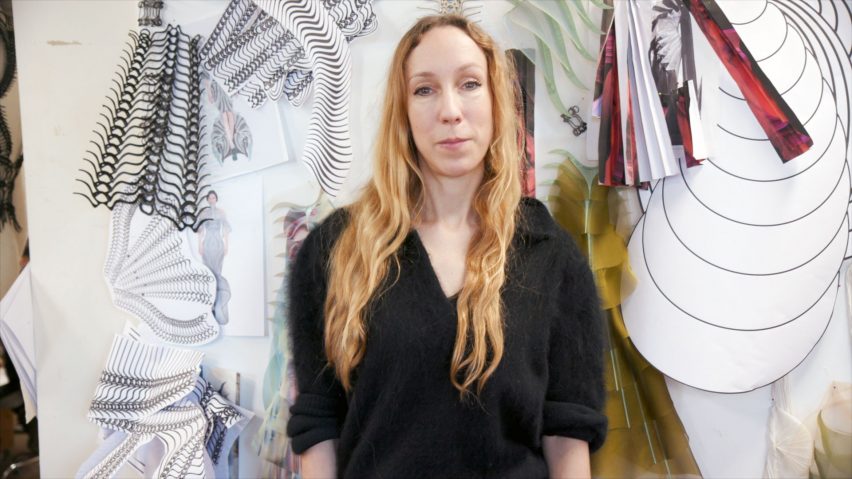
"Fashion is a form of art and it's so closely related to dance" says Iris van Herpen
Haute couture fashion design is rooted in craftsmanship and movement, Dutch designer Iris van Herpen tells Dezeen in this exclusive interview.
Van Herpen is known for her eye-catching, experimental dresses that marry the artistry of haute couture with innovative techniques such as 3D modelling, digital fabrication and laser cutting.
Learning classical ballet as a child in the farming village of Wamel introduced Van Herpen to the intricate interplay between dancers' bodies and the space that surrounds them. This relationship became ingrained within her "like muscle memory" and still forms the basis for her fashion creations, she explained.
"As a dancer you really learn that interconnected relationship between you and the dancers around you but also the space around you," Van Herpen told Dezeen over a Zoom call from her studio in Amsterdam, where she has been based for the past eight years.
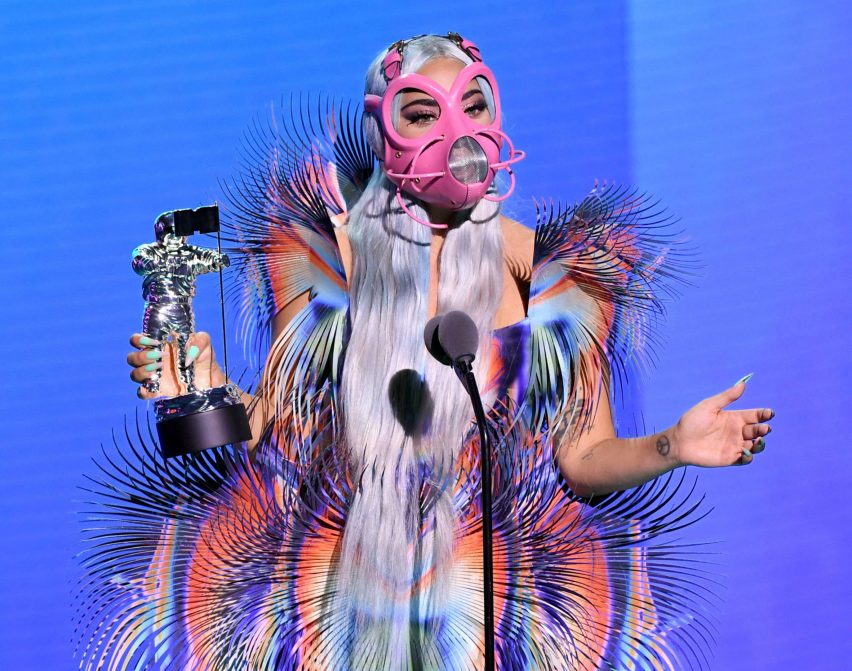
"That continuous quest is still with me in all the designs that I make now," the 38-year-old designer continued. "It's about exploring movement in all its complexity."
Unusual materials Van Herpen has used throughout her career range from silicone, organza and glass to rubber, resin and metal filings.
However, she is best known for using 3D printing in fashion and is often cited as a pioneer in the industry thanks to a 3D-printed dress she made for her Spring/Summer 2010 collection called Crystallization.
"It's really through combining craftsmanship and technologies that we can reach a next level of movement," Van Herpen said.
"That's why I'm also really eager to be in fashion – to explore new worlds of transformation within materiality," she continued.
"I often look at the looks in the way they connect to the body"
Exploring the relationship between body and movement is often the starting point of her clothing collections, which are showcased biannually during Paris Haute Couture Week.
Van Herpen, who in 2017 was awarded the Johannes Vermeer Award – the highest Dutch accolade for the arts – describes her pieces as "dancing in relationship to the wearer".
"I really believe fashion is a form of art and it's so closely related to dance," she said.
"I often look at the looks in the way they connect to the body, the way they respond to the body and it's like micro movement," she continued.
"Often the pieces are dancing in relationship to the wearer and then I'm actually back to where I started."
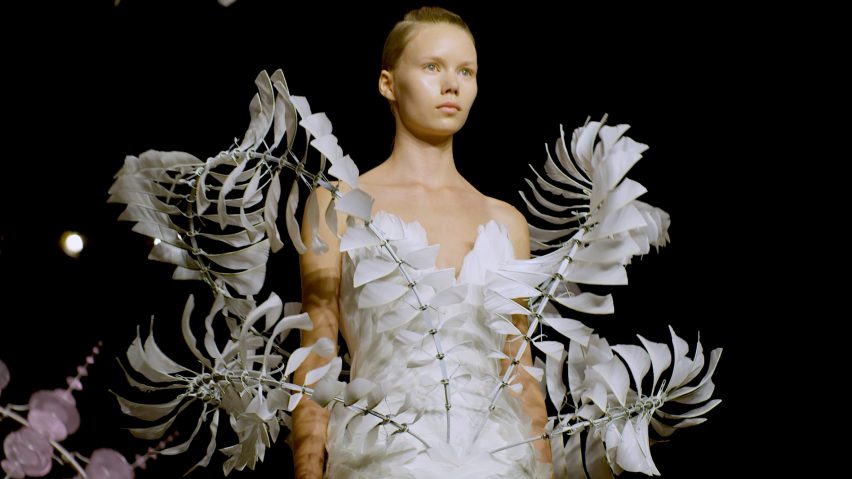
This is most evident in her Hypnosis collection of dresses, some of which appear to ripple in fast, elliptical motions in time with the movement of the body.
For example, the Infinity dress, made from layers of natural white feathers, has several stainless steel armatures embroidered with white feathers that protrude from the dress and spin, thanks to a battery and cog mechanism at the back of the dress.
The gently spinning feathers create an optical illusion and draw attention to Van Herpen's fascination with movement.
Van Herpen takes a hands-on approach to her creations, adopting what she calls an "interactive" and experimental process in which designing and making are one.
"I do some draping then the Iris van Herpen atelier starts making the look, but then often I wait and change details throughout the making process," she said. "So the design and the making process are really intertwined."
"I really see couture as the laboratory of fashion," she explained.
"The process itself is really the reason why I create. Of course I'm focused on the end results and it's about creating that vision, but the journey towards making the collection is really where the magic lies."
"I'm really always inspired by so many other disciplines"
Each collection is composed of around 20 looks that Van Herpen designs with a small team from her eponymous label, which she founded in 2007.
High-profile collections include a laser-cut dress that Lady Gaga wore at the MTV Video Music Awards in 2020 and a series of dresses that replicate the feathers and soundwave patterns of birds in flight.
A true iconoclast, she works with creatives from other disciplines to develop her materials and techniques and sees collaboration as fertile ground for innovation.
"We collaborate with so many people from other disciplines that the Iris van Herpen atelier is also sort of spread out."
"I'm really always inspired by so many other disciplines – I love fashion, but I also really need input from music, dance and architecture," she explained.
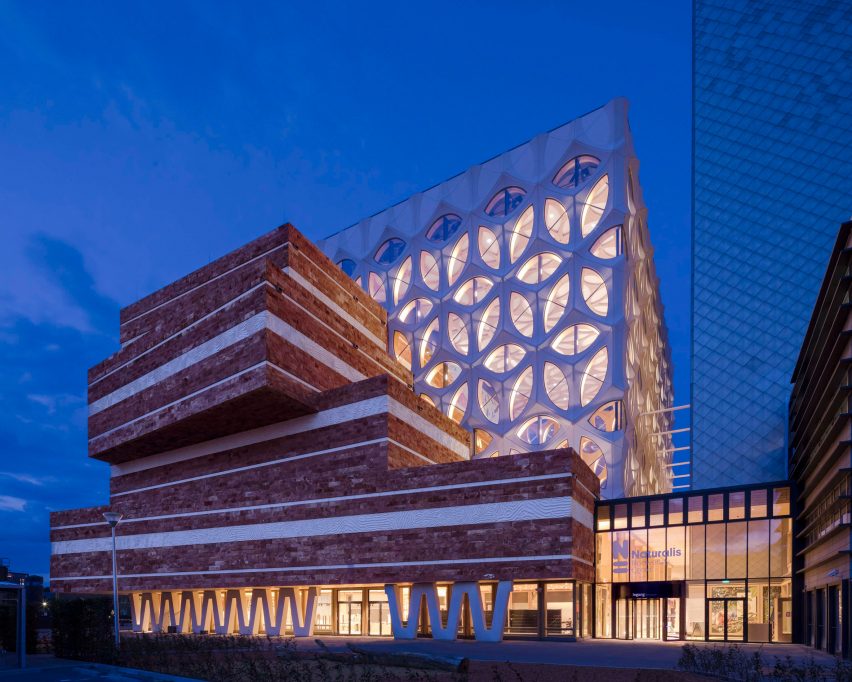
Collaborators she has previously worked with include Neutelings Riedijk Architects, with whom she created her first full-scale structure – the extension to Leiden's natural history museum.
For Van Herpen though, working with dancers from companies such as the Dutch National Ballet or New York City Ballet is still the most important collaboration.
"Each time I collaborate with a dancer, it hits me to the core and it gives me new inspiration to express it into my own materiality and fabric," she mused.
The fashion industry "needs a radical shift" in its attitude towards sustainability
A constant current that underpins many of her design collaborations is the theme of water, partly because her Amsterdam studio overlooks a network of canals.
"Water is all around me: at the studio, at my house, at the places we go and visit, so water is a big influence," she explained.
"It's this ongoing, transformative process that just shapes my consciousness, just shapes the way I perceive my own art form, and there are a few of those elements that are continuously shaping the looks."
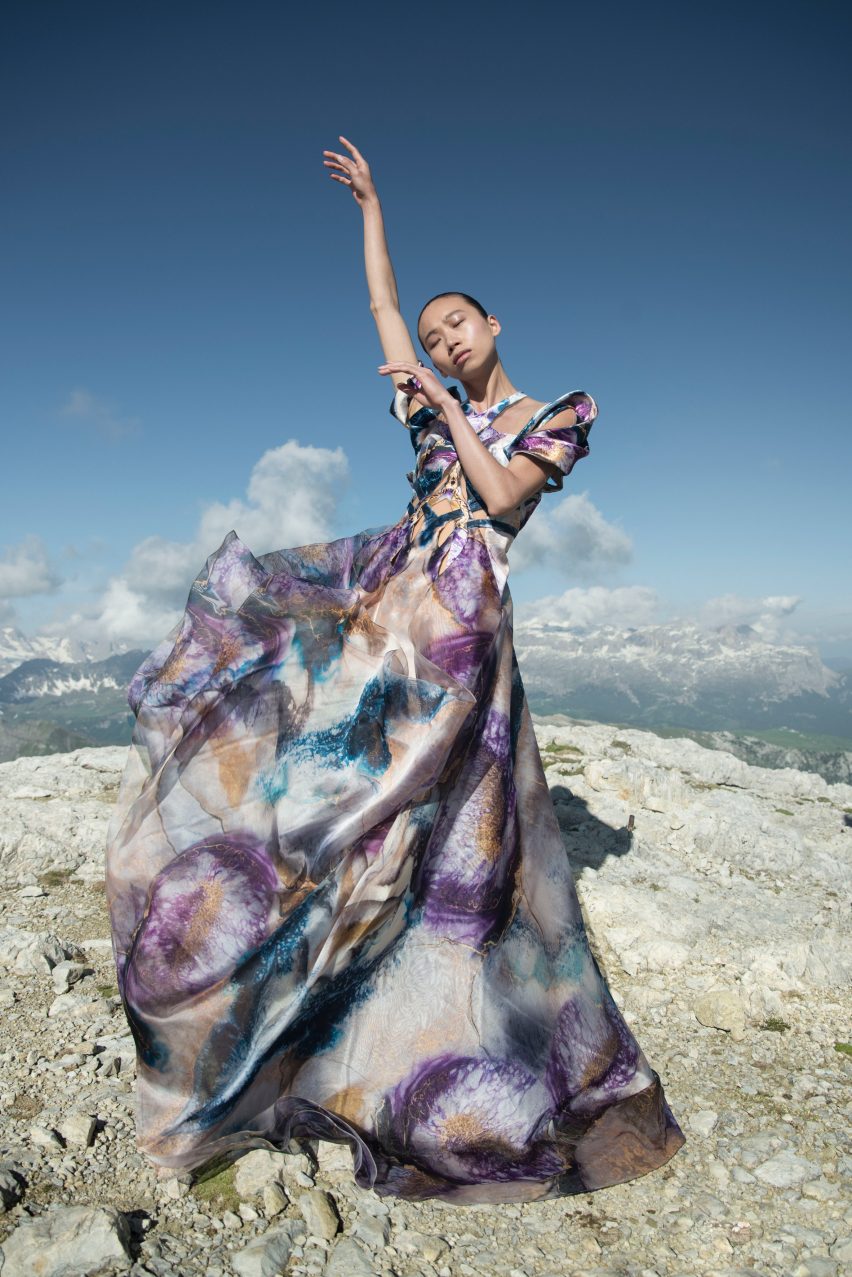
This interest in the natural world goes hand in hand with her commitment to sustainable practices. According to Van Herpen, fashion needs "a radical shift" to reduce its environmental impact.
"The last two years this has become so much more clear – fashion needs a radical shift in its in its whole vision from the materials to the production process," she said.
She points to "the focus on materiality and slow fashion and the importance of creating quality over quantity".
Implementing new natural, sustainable and recyclable materials into her collections is an ongoing development in Van Herpen's atelier.
She now frequently uses Parley for the Ocean's recycled ocean plastic fabrics in her designs. One example is a gown created for champion skydiver Domitille Kiger as part of Earthrise, a collection based on an image of planet earth taken by astronaut Bill Anders.
"There's an incredible material revolution going on at the moment," she explains, wafting a piece of delicate silk-like fabric made from pineapples by Forweavers in front of her screen as an example.
"I'm so impressed by the quality that the sustainable materials have now and it's so exciting as a designer to be able to work with them."
"The new materials obviously have new qualities, new ways of shaping, new ways of behaving, and it's like being back to the academy, discovering new qualities almost weekly."
She makes this remark while reflecting on the fact that her company celebrates its 15th birthday this month and offering an insight into the direction her brand will likely head in the future.
"All these elements have been part of my DNA throughout those 15 years, but it has never been as clear and as channelled as it is today."
"It almost feels like I'm just starting today as I did 15 years ago because so much in the world has changed."
The photography is courtesy of Iris van Herpen unless otherwise stated.